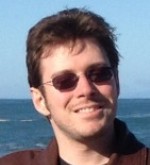
Electric Biology and Building Solidarity
By Alexander Fournier
Each field of scientific study, from the science of electrochemistry to the science of human group behavior, is ideally built upon a history of illuminating experiments. This is not always the case to be sure, as some fields become driven by barely-tested theories, and some sprouted from an ideological past touched with particular biases that would shape future experiments. But even an ideal discipline of science must contend with an inevitable complication: experiments will only reveal what our mind, technologies, and techniques of measurement are prepared to see at the time, and all three of those things are destined to evolve.
In fact, one could say that in our age of unprecedented technological and informational advancement, it ought to be a great challenge for the first thing in that list of three to keep pace with the growth of the latter two! If life features pervading themes of electrical behavior, which will become apparent throughout the sciences as technologies and techniques for its detection increasingly mature, then the Thunderbolts Project is only part of a multidisciplinary wave of new science. One could say this wave is not just “new” science, for in this collective wave there are plenty of ideas which are simply re-discovered every few decades by someone with the creativity or technological aptitude to look where others do not.
That person is then ideologically told that their field already makes enough sense and to stop rocking the boat. From their perspective within their field, they might accept their peers’ narrow view that they are but an isolated dissenter, but from the view of an analyst standing further back and observing these trends of discovery and emotional rejection across many disciplines, it is clear that this person is but one of many individuals who fuel the next natural wave of scientific revolution.
Back in October of 2010 at a Google workshop on quantum biology, biophysicist Luca Turin presented excellent initial evidence to suggest that GABA receptors functioned primarily by the principals of molecular electronics, rather than by the “lock and key” theory which many scholars might have mistakenly assumed was confirmed as fact. His dedicated investigation of a bevy of experiments from Russian and American sources added up to a very clear picture of what is possible, or even most likely, in the biology of brain receptor sites. He argued that benzodiazepines (sedative/hypnotic drugs for relaxation or sleep) function like transistors that plug into GABA receptors so as to complete a circuit.
The benzodiazepine molecule has such a strong electron affinity that when it docks with the receptor site it will actually pull an electron from the long protein that extends through the cell membrane. This change to the protein’s charge now transforms it into a conductor that will transport electrons across the cell membrane, and through the newly formed circuit that the benzodiazepine has completed.



 Alexander Fournier graduated John F. Kennedy University with a Masters Degree in Integral Psychology – a field specializing in the psychosocial analysis of individuals, groups, and belief systems. He is enthusiastic about resolving cultural misunderstandings between social groups, and helping the human species to become less accustomed to using heuristical/presumptuous reasoning. He can be reached at friendlyanalyst@gmail.com
Alexander Fournier graduated John F. Kennedy University with a Masters Degree in Integral Psychology – a field specializing in the psychosocial analysis of individuals, groups, and belief systems. He is enthusiastic about resolving cultural misunderstandings between social groups, and helping the human species to become less accustomed to using heuristical/presumptuous reasoning. He can be reached at friendlyanalyst@gmail.com